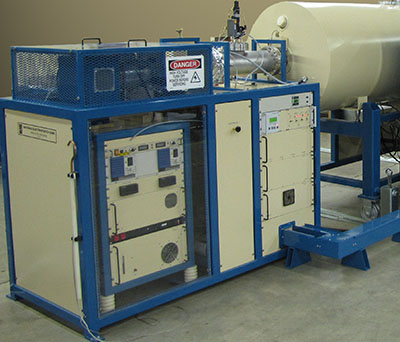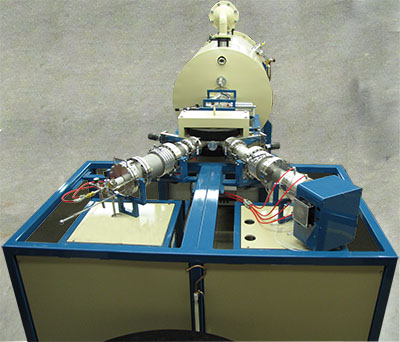Back

 |
|
 |
A complete NEC electrostatic accelerator system consists of:
Injection beamline(s) (Tandem Systems) – Includes ion source(s) and other optical and diagnostic components leading up to the accelerator beamline
Pelletron – Includes the pressure vessel, accelerator beamline, charging system, and more
High energy beamline(s) – Includes optical and diagnostic components from the exit of the Pelletron up to and including the endstation(s) or detector(s)
Control system – Includes hardware and software to computer control the accelerator system, specifically customized for each system configuration.
Each system’s component configuration and layout are customized to meet the user’s specific needs.
Sources and Injection Beamlines
Injectors begin with one or more ion sources that produce positive or negative ion beams. The source is typically followed by bending magnets or electrostatic analyzers that focus the ion beam into the accelerator. Diagnostic equipment and other focusing elements are also an integral part of the injector. Various configurations can be used depending on the user’s requirements. Detailed information regarding our various available sources can be found in the sources section.
Pelletrons
Electrostatic accelerators work on the basic principle that negative ion beams are attracted to a positive terminal and that positive ion beams are accelerated away from a positive terminal. Decades ago, charging belts were used to create a high voltage terminal in air. These belt systems were known as Van De Graaff generators. As the scientific community realized the importance of creating higher voltage terminals, experiments were conducted to increase the terminal voltage by using different charging materials and insulating gases. Continuous research through the decades resulted in the creation of the most stable and reliable electrostatic accelerators in use today: The Pelletron.
Pelletrons consist of the following:
Pressure vessel
Charging system
Acceleration tubes
Column or support structure
Gas or foil stripper
Pelletrons can either be tandem or single ended. Tandem Pelletrons start with negative ions that go through a stripping process to break up molecules and strip electrons, thus creating the necessary positive beam. Single Ended Pelletrons, on the other hand, start with a positive ion produced directly from the source inside the terminal